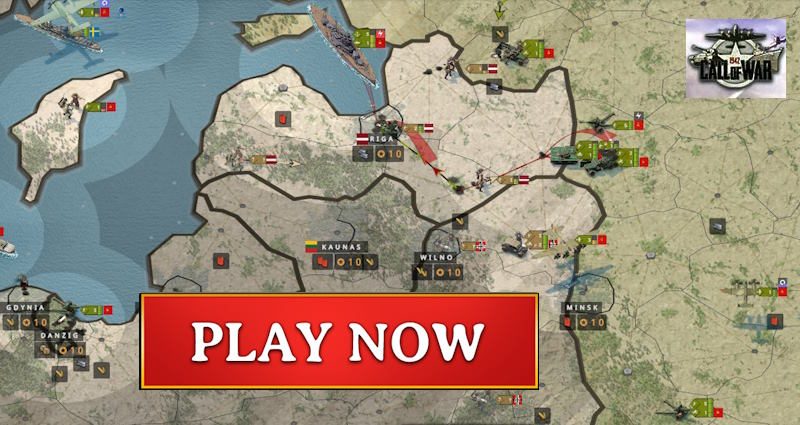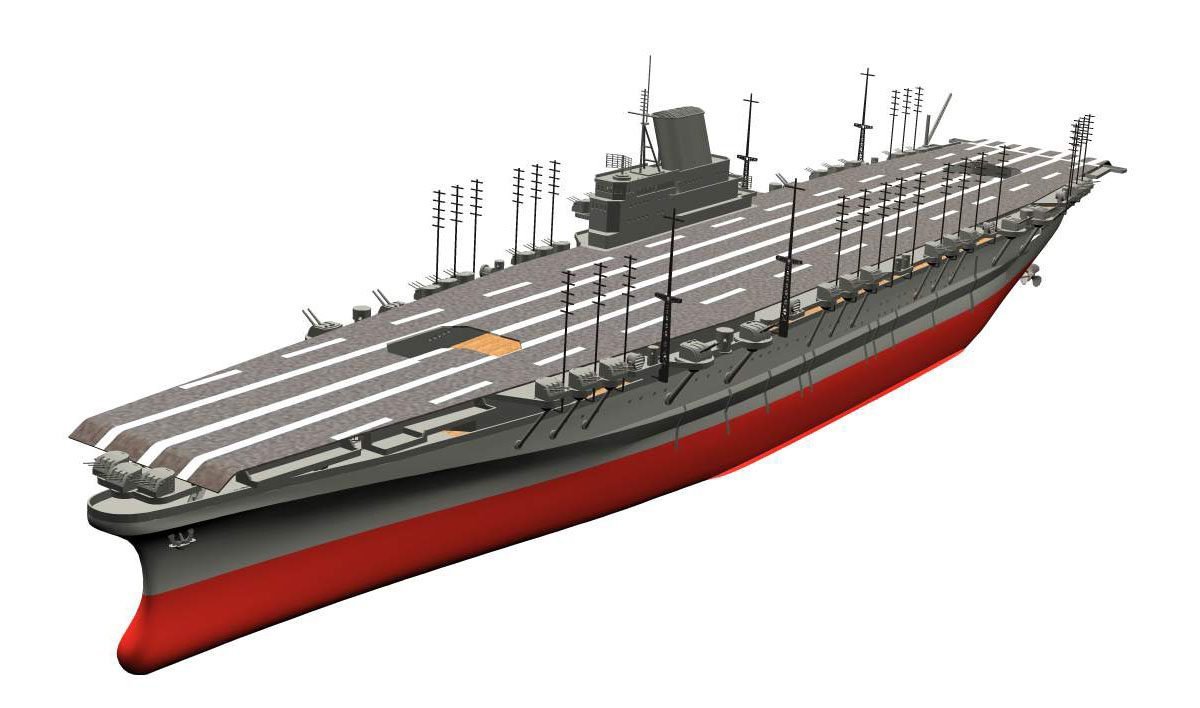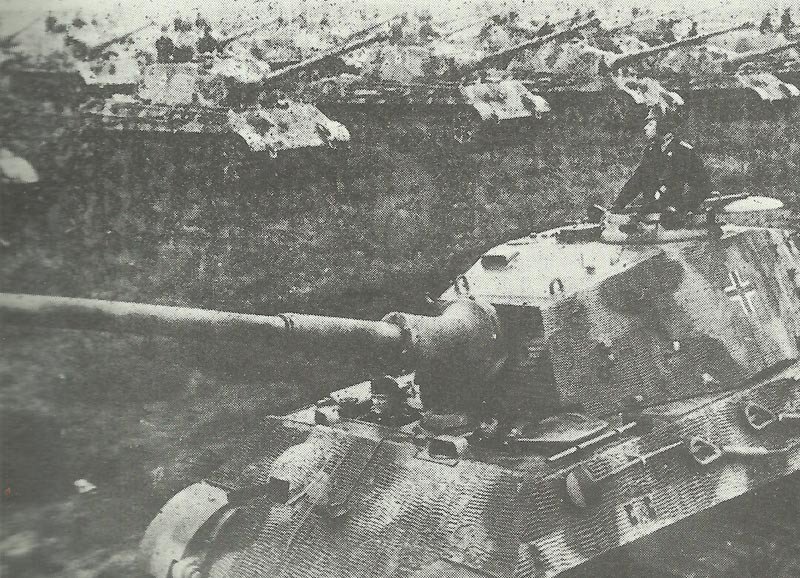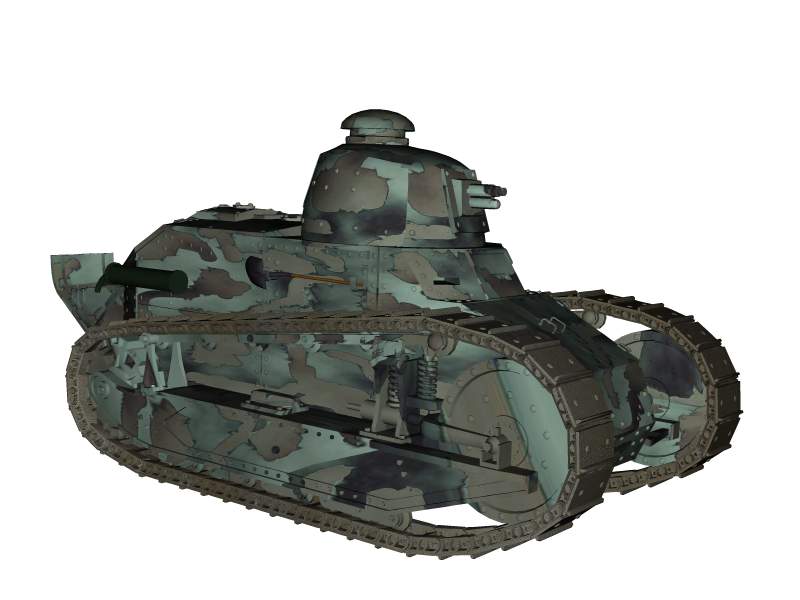Browning Automatic Pistol Model 1900, 1903, 1910 and Browning HP.
History, development, specifications, statistics and pictures.
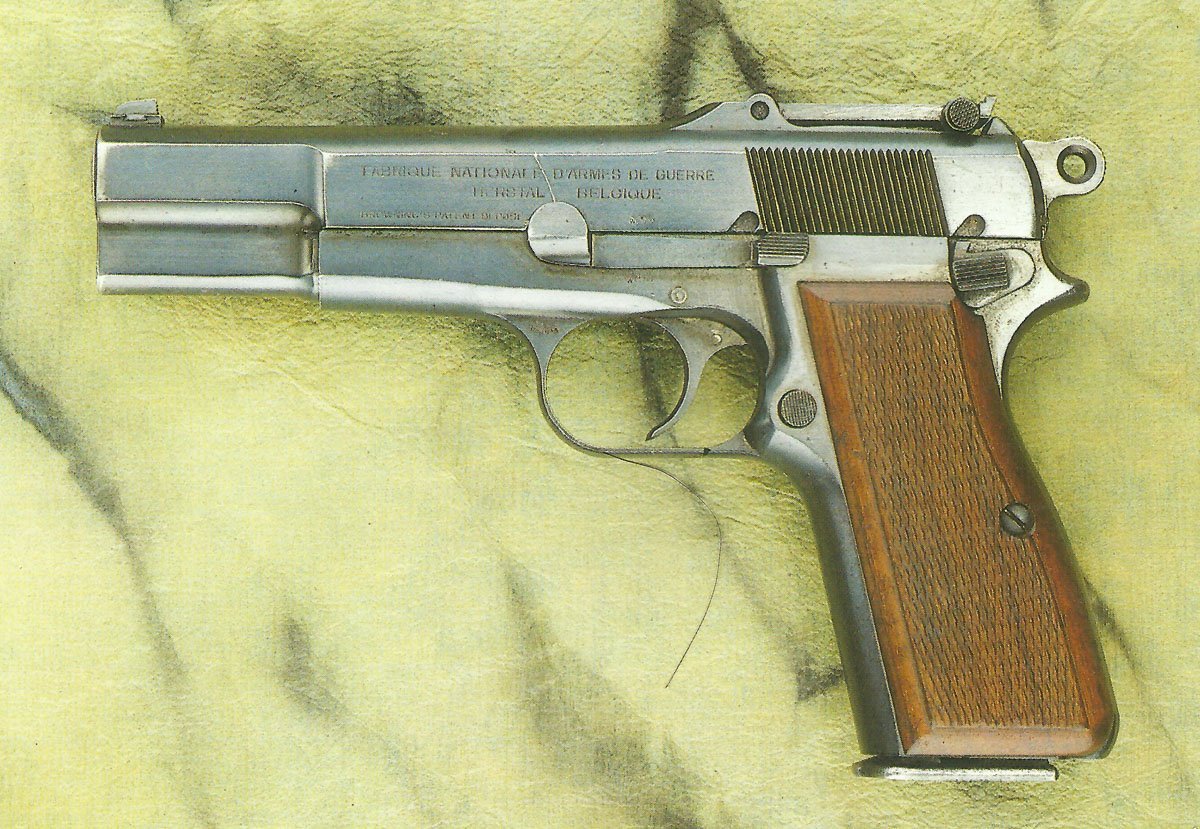
Browning Automatic Pistols
Table of Contents
Browning Automatic Pistols refer to a series of semi-automatic handguns designed by John Moses Browning, one of the most influential firearms designers in history.
The Belgian Fabrique Nationale d’Armes de Guerre (FN) was founded in collaboration with the American John M Browning after he left the Colt company. This collaboration resulted in many excellent weapon designs.
Overview
History: The first Browning pistol was the Model 1900, produced by Fabrique Nationale (FN) in Belgium.
Famous models:
– M1911: Arguably the most famous Browning design, adopted by the US military in 1911.
– Hi-Power: Developed in the 1920s, widely used by military and law enforcement.
– Browning BDA: A more modern design from the 1970s.
Features: Browning pistols are known for their reliability, accuracy, and innovative designs.
Influence: Browning’s designs have influenced countless other pistols and set standards in the firearms industry.
Mechanism: Most Browning pistols use a short-recoil operated system.
Calibers: Various models are available in different calibers, including 9mm, .45 ACP, and .380 ACP.
Current production: While John Browning passed away already in 1926, pistols based on his designs are still manufactured today by companies like FN Herstal and Browning Arms Company.
Civilian and military use: Browning pistols have been widely adopted by both civilian and military users worldwide.
These pistols have played a significant role in firearms history and continue to be popular among shooters and collectors.
Pistol Automatique Browning
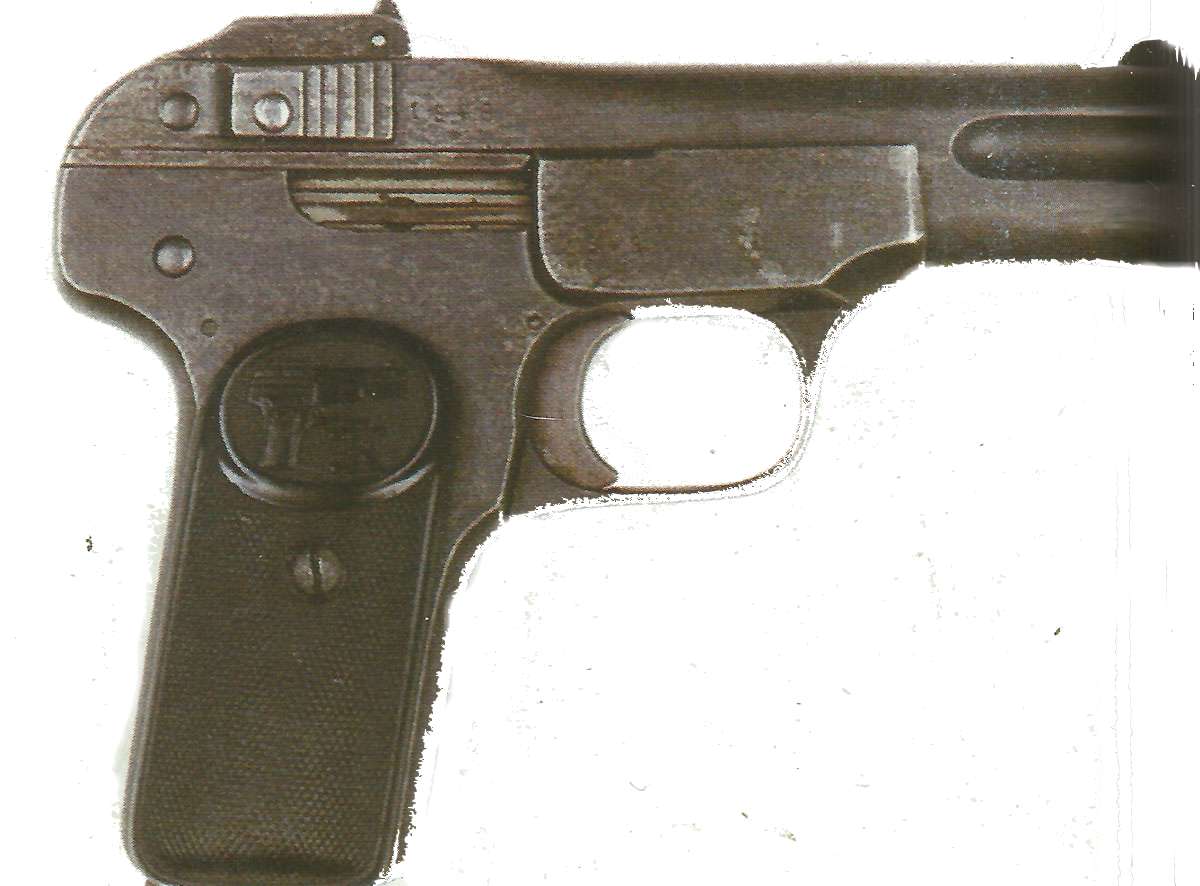
The first pistol built by this amalgamation of Browning and FN was the Automatique Browning Model 1900 pistol, a fairly simple pistol with little frills and a chamber for 7.65 mm (0.301 inch) cartridges.
This Model 1900 was never officially introduced as a standard service weapon in an army. However, as the weapon was produced by the thousands, they were used by many officers who had to bring their own pistols.
It was also copied in larger numbers in China and Spain, but mostly unofficially.
The Model 1903 was the Belgian version of a Colt pistol designed by Browning, which was made for the use of a European cartridge called 9-mm Browning Long. The 1903 model used a simple non-return mechanism which could be used at the relatively low performance of the cartridge.
The gun was one of the first modern self-loading pistols and despite the relatively powerful cartridges the breech was not locked when firing. Instead, they used a dynamic, dimensioned breech, which is still the basis for high-performance pistols today.
The Browning pistol had a single movement tension with an inner striking piece as well as mechanical and palm safety.
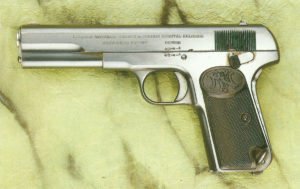
The Model 1903 was taken over by the Belgian Army and a further 95,000 units were produced under license in Sweden. During World War One it was the standard pistol of the Belgians.
Other customers were Turkey (7,550 pieces), Serbia, Denmark and the Netherlands. On some versions a shoulder stock could be attached, which also served as pistol holster.
Production in the FN factory took place from 1903 to 1937, both for the civilian market and for the armed forces.
Pistol Automatique Browning Modèle 1910
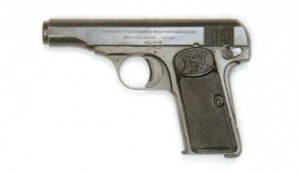
The pistol Automatique Browning Modèle 1910 is something of a curiosity among all pistol designs. Although the weapon has been built virtually uninterruptedly since 1910, it has never been officially accepted anywhere as a service weapon.
Nevertheless, the pistol was occasionally used extensively by many armed forces and the basic design was widely copied or plagiarized by other constructors.
This automatic pistol was another design of the ingenuity of John Moses Browning. Almost all guns model 1910 were manufactured in the Fabrique Nationale d’Armes de Guerre – commonly known simply as FN – built in Liège, Belgium. The weapon was in production in Belgium until 1983 for commercial sale.
A certain reason why this pistol was in production for such a long time can no longer be determined today. Probably because it was a simple, clean design.
The front part of the receiver had a tubular appearance around the barrel. This was due to the fact that the recoil spring is wrapped around the barrel itself instead of being above or below the barrel as in most other designs.
This spring is held in place by a bayonet lock around the muzzle, which added another distinctive feature to the 1910 model. In addition, the pistol was equipped with applied safety precautions and butt.
Model 1910 comes in two forms: either 7.65 mm (0.301 in) caliber or 9 mm short (0.354 in). Externally, these two versions are identical and use a seven-cartridge box magazine.
As with all FN products, the standard of manufacture and workmanship was excellent. However, copies made in places like Spain did not meet this standard.
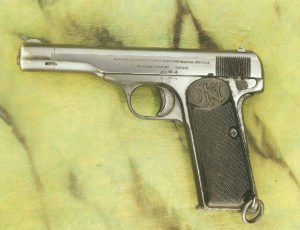
The pistol Model 1910/22 with caliber 9mm short (0.354 in) was built between 1923 and 1983 and was an extension of the original model 1910. It had an unlocked ground bolt and a coil spring around the barrel.
Originally, 60,000 of this weapon were ordered for the Yugoslavia Armed Forces. Also, the Dutch Armed Forces took over this pistol before the outbreak of the Second World War and later also the Wehrmacht.
This excellent workmanship was also continued in one of the few large-scale productions of the 1910 model. This happened after the Wehrmacht occupied Belgium in 1940 and demanded the production of numerous pistols.
In order to meet this demand, the 1910 model was built further and the mass went to the German Luftwaffe, where it was issued as Pistol P621(b) to the crews of aircraft.
Previously, the 1910 Model had already been issued in small quantities to the Belgian armed forces. Numerous other nations also used the Model 1910 pistol to a limited extent in their armed forces or police service.
The total number of all Model 1910 pistols built must have amounted to several hundred thousand.
Browning HP
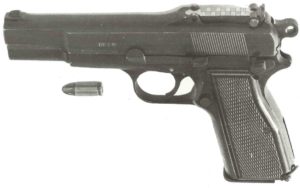
This pistol was originally designed by John Moses Browning until his death in 1925, finished by his Belgian student Dieudonne Saive at the Fabrique National d’Armes de Guerre in Herstal, Belgium, and introduced in 1935 as ‘Browning High Power’ (HP) or ‘Model 35’.
The development was based on a request from the French Army, which was looking for a new pistol after the end of the First World War.
This was the origin of her name, which is HP (High Power) or in Belgium ‘Pistole Automatique Browning GP35’, where ‘GP35’ stands for ‘Grand Puissance Modele 1935’.
It was adopted by the Belgian Armed Forces and also used in small numbers by the Lithuanian, Danish, Romanian and various other armies before the outbreak of the Second World War.
Before that, there were also large orders from China, Peru, Estonia and various other countries. A total of about 70,000 pistols were completed before the German occupation of Belgium and the Wehrmacht captured 3,433 HP-35 pistols.
After the outbreak of war, the design drawings were brought to Great Britain, but at that time there was no particular need for the weapon or available manufacturing capacity.
In Belgium, the FN factory was occupied by German troops and the production of pistols continued.
The German designation was pistol Model 35(b) or P620(b) and most of them were delivered to units of the Waffen-SS and the paratroopers. At the Waffen-SS the Browning HP even became the standard pistol. A total of 319,000 units were produced until the liberation of Liège in September 1944.
Its designer J Saive, however, fled to Great Britain before the Germans arrived. The records are not quite clear on this point, but it seems that in 1941 a very small number was produced in Great Britain for testing. They were given the designation ‘Pistol Browning 9mm (FN) Automatic (Mk 1, UK)’, but were never officially adopted and the design approval was subsequently revoked in April 1945.
In the meantime, however, the design drawings had been passed on to Canada and the pistol was put into production at John Inglis in Toronto with the help of its designer. The first production batches were delivered to the Chinese Nationalist Army. As soon as their needs were met, the Canadian Army was supplied and a number was sent to Great Britain and distributed to command and airborne troops.
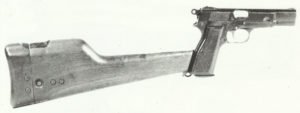
The pistol was originally designed to be equipped with an optimistic sliding visor stepped up to 500 meters or 500 yards and a wooden stock that could be folded back that the weapon to become a kind of carbine.
The weapons delivered to China still corresponded to this pattern, since in Chinese military circles such exotic things were considered indispensable.
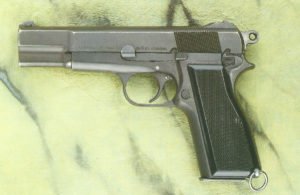
The models delivered to Canada and Great Britain instead received a simple visor and had no wooden shaft. From February 1944 to September 1945 a total of 15,816 pistols were built in Canada under the designation No.1 Mk I (with sliding visor) and No.2 Mk I (with rigid visor).
After 1945, production of the gun was resumed in Liège and many nations used it as their standard pistol. Various commercial models were developed and even a sport shooter version. The British army used the Browning HP in the post-war period under the name Pistol Automatic L9A1. The weapon is still being developed and delivered to dozens of armed forces.
The Browning HP was a very popular weapon as it was very effective and reliable. It fired the standard 9mm Parabellum cartridge, as used by the Sten Gun and which was available in large quantities on the European continent for numerous weapons.
Its magazine size of 13 cartridges was unusual and far more than in any other handgun. This advantage was often exploited against those enemies who counted every shot and were certain after eight shots to find the shooter of the pistol when changing the magazine, but this led to unpleasant surprises.
Despite the large double-breasted magazine, the handle is not too wide, although a lot of practice and general experience with the pistol is necessary. The gun uses the locked Browning breech with the recoil generated during shooting as the driving mechanism and has an external firing pin.
In many ways the mechanism is the same as the Colt M1911, which was also designed by Browning. However, at Browning HP this was adapted to quality control and used advantages from past design experience.
The Browning HP is one of the most successful pistol designs ever produced. Not only is it still widely used in service, its numbers must be even larger than all other types combined.
For this purpose the weapon was built in different variants at numerous places and in different countries. Therefore, there are numerous versions, all of which use the standard 9 mm Parabellum cartridge. On some models the magazine is fixed and there is an adjustable rear sight and front sight. In addition to the previously mentioned holster stock for use as a kind of carbine, there are also versions with light metal frames for weight reduction.
Specifications Browning Automatic Pistols
Specifications:
Specification | Model 1900 | Model 1903 | Model 1910 | Browning HP |
|---|---|---|---|---|
Type | Automatic pistol | = | = | = |
Caliber | 7.65 mm (0.301in) | 9 mm (0.354in) Browning long | 7.65 mm (0.301in) or 9 mm short (0.354in) | 9 mm Parabellum (0.354in) |
Length | 6.4 in (16.25 cm) | 8 in (20.6 cm) | 6 in (15.2 cm) or 7 in (17.8 cm) for Model 1910/22 | 7.75 in (19.6 cm) |
Weight | 0,625 kg | 0,94 kg | 1.26 lb (0.57 kg) or 1.56 lb (0.705 kg) for Model 1910/22 | 2.12 lb (0.96 kg) - 2.23 lb (1.01 kg) |
Barrel | 4.02 in (10.20 cm) | 5 in (12.7 cm) | 3.48 in (8.9 cm) | 4.41 in (11.2 cm ), 4 grooves, right hand twist |
Feed system | 7 | 7 | 7 or 8-9 for Model 1910/22 | 13 |
System of operation | Recoil | = | = | Recoil: Browning link |
Muzzle velocity | 951 ft/sec (290 m/sec) | 1,050 ft/sec (320 m/sec) | 981 ft/sec (299 m/sec) | 1,160 ft/sec (354 m/sec) |
Service statistics:
Service statistics | Model 1900 | Model 1903 | Model 1910 | Browning HP |
|---|---|---|---|---|
Manufactures | Fabrique Nationale d’Armes de Guerre (FN), Liège (Belgium) | = | = | additional at John Inglis&Co, Toronto (Canada) |
Production delivery | 1900 | 1903 | 1910 (9-mm-Model 1910/22 from 1923) | 1935 (Canada from February 1944) |
Service delivery | unofficially only | in World War I (1914-18) standard pistol of the Belgian army | for the first time in World War I. In the 2nd World War mainly by the flight personnel of the German Air Force | after production start |
Final delivery | ? | 1937 | 1983 | still in production (in Canada until September 1945) |
Production figure | ? | amongst others 95,000 in Sweden; 7,550 for Turkey | several hundred thousand | 70,000 until May 1940; 319,000 until Sep 1944 for Waffen-SS and German parachute troops; 15,816 in Canada |
Price per unit | ? | ? | ? | ? |
References and literature
The Encyclopedia of Infantry Weapons of World War II (Ian V.Hogg)
Infanterie im 2. Weltkrieg (J.B.King, John Batchelor)
Illustriertes Lexikon der Waffen im 1. und 2. Weltkrieg (V. Dolinek, V. Francev, J. Sach)
The Illustrated Encyclopedia of Weapons of World War I (Chris Bishop)
The Encyclopedia of Weapons of World War II (Chris Bishop)




